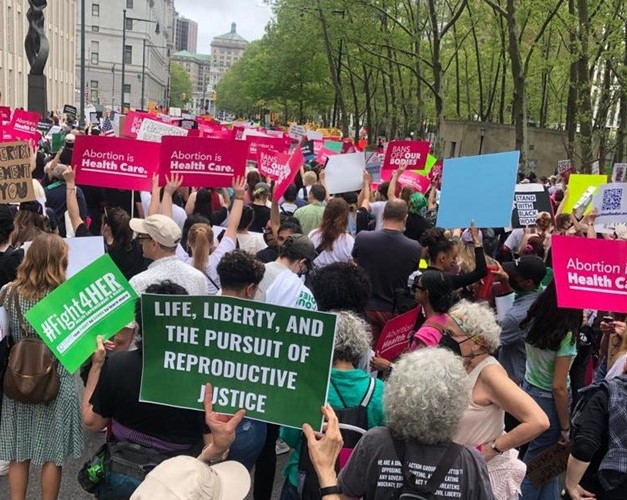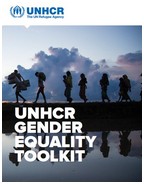Women & Poverty – Challenges to Have Gender Specific Data on Poverty – Research
Извор: WUNRN – 12.04.2018
Cycle: Global
ABSTRACT – This paper uses household surveys from 89 countries to look at gender differences in poverty in the developing world. In the absence of individual-level poverty data, the paper looks at what can we learn in terms of gender differences by looking at the available individual and household level information. The estimates are based on the same surveys and welfare measures as official World Bank poverty estimates. The paper focuses on the relationship between age, sex and poverty. And finds that, girls and women of reproductive age are more likely to live in poor households (below the international poverty line) than boys and men. It finds that 122 women between the ages of 25 and 34 live in poor households for every 100 men of the same age group. The analysis also examines the household profiles of the poor, seeking to go beyond headship definitions.
Using a demographic household composition shows that nuclear family households of two married adults and children account for 41 percent of poor households, and are the most frequent household where poor women are found. Using an economic household composition classification, households with a male earner, children and a non-income earner spouse are the most frequent among the poor at 36 percent, and the more frequent household where poor women live. For individuals, as well as for households, the presence of children increases the household likelihood to be poor, and this has a specific impact on women, but does not fully explain the observed female poverty penalty.
POVERTY IS NOT GENDER NEUTRAL – CHALLENGES & PROGRESS ON DATA ON WOMEN & POVERTY
SUBMITTED BY CAROLINA SANCHEZ – 03/08/2018
CO-AUTHORS: ANA MARIA MUNOZ-BOUDET
“Seventy percent of the world’s extreme poor are women”. This is what we call a ‘zombie statistic’: often quoted but rarely, if ever, presented with a source from which the number can be replicated. In fact, what we know from existing data is that women account for about 50 percent, not 70 percent, of the world’s extreme poor—although, as we argue below, this does not mean poverty is gender neutral.
We have such questionable “facts” because existing poverty data makes it hard to have a clear picture of the true gender dimensions of poverty. Poverty is, generally, measured at the household level—meaning that if a household lives in extreme poverty, we assume that everyone under that roof lives at the same level of deprivation. However, evidence and common sense tell us that this is rarely the case; women, children, people with disabilities, and elders, for example, often receive smaller portions of food or have less invested in their education and health.
Ideally, we would have detailed, individual-level data to truly understand the depth and breadth of poverty among women in the world. However, given the difficulty that many countries face in gathering household-level data, which can be costly and time-consuming, this will be a challenge, but one we are beginning to tackle.
The good news is that, despite the limitations, we can still learn a lot about the differences in poverty between men and women in the meantime. This is the focus of a collaborative effort by UN Women and the World Bank, which uses the World Bank’s Global Monitoring Database (GMD) to analyze gender differences in welfare at the global level. The database covers 89 countries, representing approximately 84 percent of the population in the developing world – or about 5.2 billion individuals in 2013. Our paper uses data from all 89 countries for most estimates, and for some related to labor participation, a restricted sample of only 71 of these countries (roughly 75 percent of the developing world population). We use the International Poverty Line ($1.90 a day) for all the estimates. Here is what we found:
Children account for 44 percent of the global extreme poor and poverty rates are highest among children, particularly among girls (Figure 1). There are 105 girls for every 100 boys living in extreme poor households, across all ages.
As boys and girls get older, the gender gap in poverty widens further. 122 women between the ages of 25 and 34 live in poor households for every 100 men of the same age group. This coincides with the peak productive and reproductive ages of men and women, and likely reflects that as young women become wives and mothers, they often stop working in order to care for their husbands and children. This is not uniform across regions, however: Europe and Central Asia, the region with the lowest extreme poverty rate, also has the smallest gender poverty gap, while Sub-Saharan Africa, home to most of the global extreme poor, has the largest gender poverty gap.
Gender differences in poverty rates even out between the ages of 40 and 65, but emerge again in the elderly years in reverse. The share of men over the age of 65 living in poor households is higher than that of women—7.3 compared to 6.7 percent respectively.
Marriage, divorce, separation and widowhood also affect poverty of men and women differently. Girls and boys who are married before the age of 18 see higher poverty rates than those who are married later. Similarly, marriage and childbearing are correlated with higher poverty rates for both men and women of peak childbearing and reproductive age (18-49 years old). Although widows represent a small share of the poor population below age 65, widowhood is associated with higher poverty rates for men and especially women up to age 49. In adulthood, it seems that divorce and separation affect women more negatively than men, but do not necessarily translate into higher poverty rates compared to those of their married counterparts.
While most of the observed differences in poverty between men and women can be chalked up to differences in age and life events, there are still a few that cannot be explained by having children, lacking education, working for pay, or other household characteristics. These unexplained gender differences, which we call the poverty penalty, disproportionately affect young women and girls up to age 30. This poverty penalty accounts for about 5 million more women living in extreme poverty across the world, particularly in South Asia and Sub-Saharan Africa. This tells us that we need to look beyond the traditional reasons that can explain the differences in poverty between women and men, and explore more areas for meaningful action to help women, men, and entire families move out of poverty.
Our paper injects what we hope is some new, useful information to help explain gender differences in poverty across the lifecycle. However, this is just the tip of the iceberg; there is much more work needed. That’s why we have started to expand work on measuring what happens within households, first by looking beyond headship (see second part of the paper), and gathering more detailed information on consumption at the individual level (forthcoming in the next Poverty and Shared Prosperity Report). We are also building on experiments using alternative measures such as clothing in Malawi, asset ownership in Latin America, or nutritional status in Sub-Sahara Africa that help us find ways to overcome potential biases associated with assumptions about how resources are shared within households.
We hope to eventually replace the zombie statistic from above with a living, breathing, accurate understanding of the true depth of poverty among women in the world. This is not an attempt to make poverty more gender-equal, but rather to ensure that countries’ and communities’ efforts to end poverty do not leave anyone behind.
WOMEN & POVERTY INFOGRAPHIC – http://beijing20.unwomen.org/en/infographic/poverty
Women & Poverty
The last few years have seen historic achievements in reducing the number of people who are poor, making the end of extreme poverty possible in the coming generation. That requires cutting the multiple roots of impoverishment. One of the deepest is gender discrimination, which imposes a disproportionate burden on women.
When women are poor, their rights are not protected. They face obstacles that may be extraordinarily difficult to overcome. This results in deprivation in their own lives and losses for the broader society and economy, as women’s productivity is well known as one of the greatest generators of economic dynamism.
While both men and women suffer in poverty, gender discrimination means that women have far fewer resources to cope. They are likely to be the last to eat, the ones least likely to access healthcare, and routinely trapped in time-consuming, unpaid domestic tasks. They have more limited options to work or build businesses. Adequate education may lie out of reach. Some end up forced into sexual exploitation as part of a basic struggle to survive.
And while women at large have not yet achieved an equal political voice, women in poverty face extra marginalization. Their voices are rarely heard, for example, in decisions on managing an economy, or sharing benefits and costs.
The Beijing Declaration and Platform for Action, adopted by 189 Member States in 1995, reflects the urgency around women and poverty by making it the first of 12 critical areas of concern. Actions under any of these, whether education, the environment, and so on, help women build better lives. But measures targeted to reducing women’s poverty are critical too.
Governments agreed to change economic policies to provide more opportunities for women, improve laws to uphold economic rights, and boost access to credit. They committed to collecting better information to track how poverty affects women differently, as knowing any problem is essential for solving it.
Since Beijing, much progress has been made in these areas. There is still far to go. Ending extreme poverty will come within reach only by fully involving women and respecting their rights—at every step along the way.
Full Infographic: http://beijing20.unwomen.org/en/infographic/poverty
Research Document – World Bank – http://documents.worldbank.org/curated/en/135731520343670750/pdf/WPS8360.pdf


